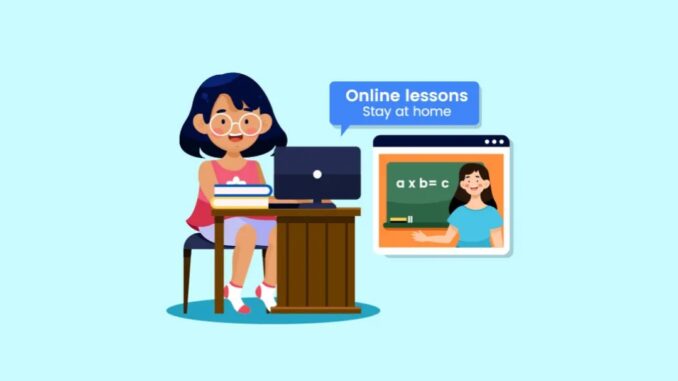
Online teaching refers to the process of delivering educational content and instruction through digital platforms. This mode of instruction can take many forms, such as live virtual classes,
recorded lectures, interactive webinars, and various digital resources. With the growth of technology and the internet, online teaching has gained popularity in recent years, especially during the COVID-19 pandemic.








Key Features of Online Teaching
Flexibility: Students can learn at their own pace and schedule, making it easier to balance studies with other commitments.
Accessibility: Online teaching allows students from different geographic locations to access quality education without the need for physical attendance.
Variety of Resources: Instructors can utilize diverse multimedia resources, including videos, articles, interactive quizzes, and forums to enhance learning.
Collaboration Tools: Tools like discussion boards, group projects, and video conferencing platforms enable collaboration among students and between students and instructors.
Assessment Methods: Online platforms can support various forms of assessment, such as quizzes, assignments, and exams, often allowing for immediate feedback.
Tools and Technologies
Learning Management Systems (LMS): Platforms like Moodle, Canvas, or Blackboard that help educators organize and deliver content.
Video Conferencing Tools: Applications such as Zoom, Microsoft Teams, or Google Meet that facilitate live interactions.
Content Creation Tools: Tools like Prezi, PowerPoint, or Camtasia for creating engaging educational materials.
Assessment Tools: Platforms like Kahoot, Quizlet, or Google Forms for conducting assessments and quizzes.
Challenges
Engagement: Keeping students engaged in an online environment can be challenging due to distractions or lack of face-to-face interaction.
Technology Issues: Not all students may have consistent access to the necessary technology or reliable internet connections.
Self-Discipline: Online learning requires a higher degree of self-motivation and organization from students.
Limited Social Interaction: The absence of in-person interaction can impact socialization and networking opportunities.
Best Practices for Online Teaching
Set Clear Expectations: Outline course objectives, participation requirements, and grading criteria.
Use Varied Teaching Methods: Incorporate videos, readings, discussions, and hands-on activities to cater to different learning styles.
Encourage Interaction: Regularly engage with students through discussions, group projects, and Q&A sessions.
Provide Feedback: Timely and constructive feedback helps students understand their performance and areas for improvement.
Be Available: Maintain open lines of communication to support students who may have questions or need assistance.
Conclusion
Online teaching offers unique opportunities for educators and students, fostering a more flexible and accessible learning environment. As technology continues to advance, the landscape of online education is likely to evolve further, incorporating new tools and methodologies to enhance the learning experience.

Leave a Reply